


Notice: This is the official website of the All Empires History Community (Reg. 10 Feb 2002)
Parthians looked like which modern people? |
Post Reply 
|
Page 123> |
| Author | ||
Vispaiti 
Immortal Guard 
Joined: 14-Aug-2014 Online Status: Offline Posts: 3 |
 Quote Quote  Reply Reply
 Topic: Parthians looked like which modern people? Topic: Parthians looked like which modern people?Posted: 14-Aug-2014 at 07:25 |
|
he looks for me typical for a Scythian and we must remember that Parthians were originally an nomadic eastern Iranian tribe |
||
 |
||
Vispaiti 
Immortal Guard 
Joined: 14-Aug-2014 Online Status: Offline Posts: 3 |
 Quote Quote  Reply Reply
 Posted: 14-Aug-2014 at 07:23 Posted: 14-Aug-2014 at 07:23 |
|
Parthians had nothing to do with Germanic people of Europe.They orginated in modern Turkmenistan and spoke originally an eastern Iranian language but later they adopted Persian language and culture.It is very likely that modern turkmens look like the ancient Parthians.Most of them are turkized Iranian people |
||
 |
||
Karlaswagnaz 
Janissary 
Joined: 31-May-2014 Online Status: Offline Posts: 28 |
 Quote Quote  Reply Reply
 Posted: 05-Jun-2014 at 01:41 Posted: 05-Jun-2014 at 01:41 |
|
|
I think they looks like North Mediterranean people, I think the Goths, Alans, Vandals and Sueves come from the same people as the Parthians.
|
||
|
Stars die and reborn...
|
||
 |
||
Attis of Anatolia 
Janissary 
Joined: 20-May-2014 Online Status: Offline Posts: 8 |
 Quote Quote  Reply Reply
 Posted: 21-May-2014 at 07:16 Posted: 21-May-2014 at 07:16 |
|
|
LOL
Phrygians and Trojan are Anatolian!!! ionian civilization originated Anatolia too i heard they are descend of luwians :D |
||
 |
||
Attis of Anatolia 
Janissary 
Joined: 20-May-2014 Online Status: Offline Posts: 8 |
 Quote Quote  Reply Reply
 Posted: 21-May-2014 at 07:12 Posted: 21-May-2014 at 07:12 |
|
|
Parthians are iranian i think they have lot infulence of greeks :D
|
||
 |
||
Deathless 
Janissary 

Joined: 08-Nov-2010 Online Status: Offline Posts: 22 |
 Quote Quote  Reply Reply
 Posted: 08-Nov-2010 at 08:10 Posted: 08-Nov-2010 at 08:10 |
|
Really.. so Trojans were not genetically or culturally related to Greeks? I don't want to be disrespectful my friend but you need to dig a bit more regarding Thracians. ----- New in town. Props for the site and a hi to all the nerdy addicted to history peeps  |
||
 |
||
Xorto 
Shogun 
Joined: 06-May-2010 Location: Germany Online Status: Offline Posts: 224 |
 Quote Quote  Reply Reply
 Posted: 18-Aug-2010 at 22:23 Posted: 18-Aug-2010 at 22:23 |
|
|
Parthian Prince
The greatest kurdish commander of all time.
|
||
 |
||
Kanas_Krumesis 
Consul 

Joined: 24-Dec-2009 Location: Bulgaria Online Status: Offline Posts: 326 |
 Quote Quote  Reply Reply
 Posted: 09-Jul-2010 at 03:36 Posted: 09-Jul-2010 at 03:36 |
|
|
Persian soldiers from Achaemenid times through the eyes of the ancient Greeks
 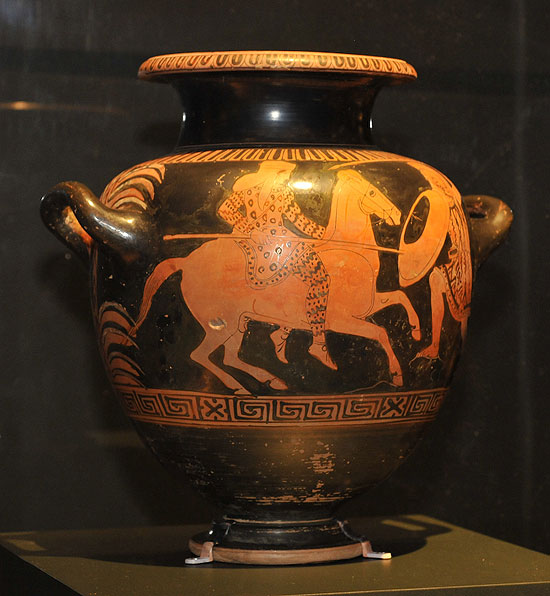 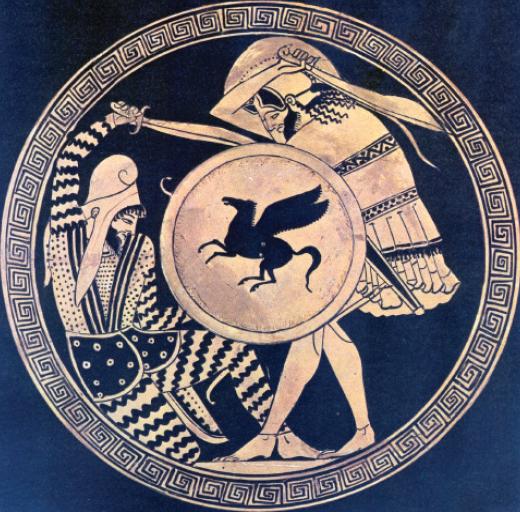 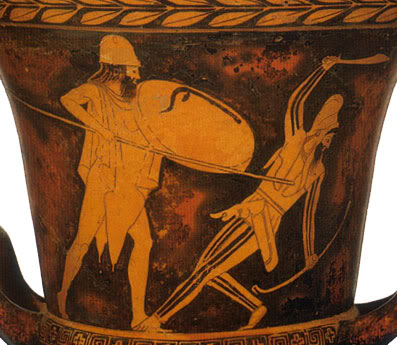 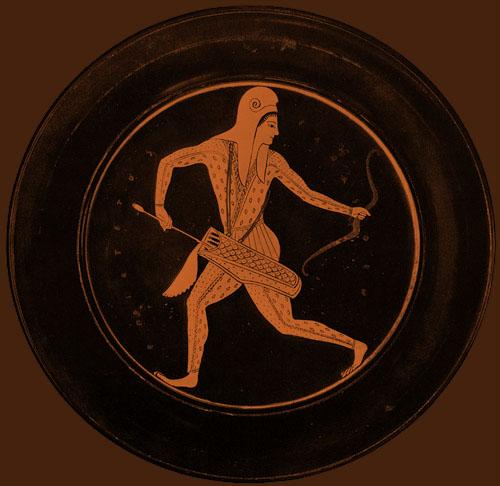  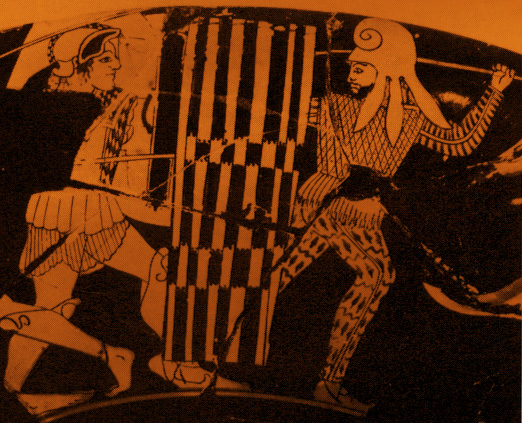 The original image of Darius The Great from antique Greek vase. He had red hair and beard.
 Not like this reproduction:
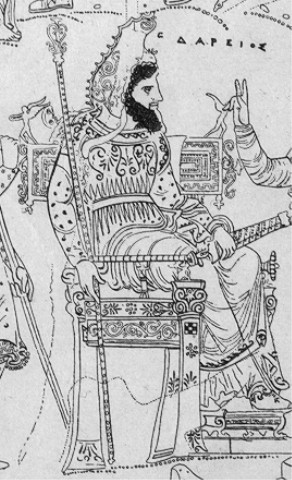 |
||
 |
||
kalhur 
Earl 
Joined: 23-Jan-2010 Online Status: Offline Posts: 263 |
 Quote Quote  Reply Reply
 Posted: 09-Apr-2010 at 04:04 Posted: 09-Apr-2010 at 04:04 |
|
|
if partian looked like the guy on this picture, then sure they look like many kurdish people in southern kurdestan . kermanshah and surrounding!
Edited by kalhur - 09-Apr-2010 at 04:12 |
||
 |
||
opuslola 
Tsar 
suspended Joined: 23-Sep-2009 Location: Long Beach, MS, Online Status: Offline Posts: 4620 |
 Quote Quote  Reply Reply
 Posted: 05-Apr-2010 at 21:50 Posted: 05-Apr-2010 at 21:50 |
|
|
Maybe it is an age situation? I am old by most accounts, and I have traveled throughout a lot of this planet! Or, perhaps some of us can see things as well as hear things tht others do not, or cannot?
But, I do seem to have an "ear" for languages and accents! But, perhaps that is just an "old man" speaking? laugh! Edited by opuslola - 05-Apr-2010 at 21:51 |
||
|
http://www.quotationspage.com/subjects/history/
|
||
 |
||
Shield-of-Dardania 
Consul 

Suspended Joined: 23-Mar-2010 Online Status: Offline Posts: 357 |
 Quote Quote  Reply Reply
 Posted: 05-Apr-2010 at 21:28 Posted: 05-Apr-2010 at 21:28 |
|
|
You sure? I can tell too, but only when they start speaking.
Seriously though, Opus. I lived in England for seven years, and I never could tell between Anglo-Saxon, Dutch, Dane or German. Especially if they're all of similar coloured hair.
Finns I could begin to suspect a bit, their head and face shape tending, very slightly, toward Asiatic, I think. Whereas some dark haired, Mediterraneanish Frenchman(woman) also I could hazard a guess.
|
||
|
History makes everything. Everything is history in the making.
|
||
 |
||
opuslola 
Tsar 
suspended Joined: 23-Sep-2009 Location: Long Beach, MS, Online Status: Offline Posts: 4620 |
 Quote Quote  Reply Reply
 Posted: 05-Apr-2010 at 20:55 Posted: 05-Apr-2010 at 20:55 |
|
|
Since most all "White" people here in the South, where I was born and raised, can or did call England or Scotland, etc., as their home-country, I can tell, it seems, a difference between Danes and Germans, and even French, on a general basis, as well as Finnlanders, Swedes, etc.
Interestingly, Spain gives me more of a problem?, especially in Madrid! Catalonia is different entirely! |
||
|
http://www.quotationspage.com/subjects/history/
|
||
 |
||
Shield-of-Dardania 
Consul 

Suspended Joined: 23-Mar-2010 Online Status: Offline Posts: 357 |
 Quote Quote  Reply Reply
 Posted: 05-Apr-2010 at 20:12 Posted: 05-Apr-2010 at 20:12 |
|
You could have also said Dutch, German or Anglo-Saxon, and I still wouldn't have disagreed with you. Only Qalibaf's eyes, to me, have that distinct Mediterraneanish, or perhaps, Indo-Europeanish, look. Edited by Shield-of-Dardania - 05-Apr-2010 at 20:14 |
||
|
History makes everything. Everything is history in the making.
|
||
 |
||
Shield-of-Dardania 
Consul 

Suspended Joined: 23-Mar-2010 Online Status: Offline Posts: 357 |
 Quote Quote  Reply Reply
 Posted: 05-Apr-2010 at 20:02 Posted: 05-Apr-2010 at 20:02 |
|
They look like classical Patrician Romans, to me.
|
||
|
History makes everything. Everything is history in the making.
|
||
 |
||
opuslola 
Tsar 
suspended Joined: 23-Sep-2009 Location: Long Beach, MS, Online Status: Offline Posts: 4620 |
 Quote Quote  Reply Reply
 Posted: 02-Apr-2010 at 14:18 Posted: 02-Apr-2010 at 14:18 |
|
|
I would go as far to say that one could well place Ali Larijan, Mohammad-Ali Ramia, and Muhammed-Bager Qualibaf, upon any street corner in Denmark, and they would be indistinguishable from any other Dane!
But, I could have mentioned most any street corner in the West! But, to me at least, they most resemble Danes! Regards, |
||
|
http://www.quotationspage.com/subjects/history/
|
||
 |
||
Shield-of-Dardania 
Consul 

Suspended Joined: 23-Mar-2010 Online Status: Offline Posts: 357 |
 Quote Quote  Reply Reply
 Posted: 24-Mar-2010 at 02:58 Posted: 24-Mar-2010 at 02:58 |
|
Phrygia and Troy were just place names. My view, based on literature surveys, is that the people who inhabited them were basically Thracians, although Greeks would prefer to believe that Phyrygians and Trojans were Ionian Greeks.
If we consider that Ashkanians a.k.a Ashkuzai a.k.a. were Scythians, and that Scythians were in turn descended from Thracians before them, then it makes sense that an Ashkanian battalion would have fought on the side of the Trojans.
|
||
|
History makes everything. Everything is history in the making.
|
||
 |
||
Shield-of-Dardania 
Consul 

Suspended Joined: 23-Mar-2010 Online Status: Offline Posts: 357 |
 Quote Quote  Reply Reply
 Posted: 24-Mar-2010 at 02:41 Posted: 24-Mar-2010 at 02:41 |
|
|
Cyr, Cambodia the modern country is located in South East Asia, sandwiched between Thailand, Laos and Vietnam.
Kamboja the ancient Indo-Iranian tribe inhabited the Western Himalayas, the Pamir-Badakshan region and the Hindu Kush.
The people of Cambodia (Kambu-ja), i.e. the Khmers, believe their country's name means, in Sanskrit, 'sons of Kambu', this Kambu being an ancient South Indian brahmin of royal blood, who may or may not have had Indo-Iranian ancestry, who is claimed to have founded the earliest ancient Cambodian kingdom.
As for Kamboja the ancient Indo-Iranian tribe of the Western Himalayas, some people believe that the Tajiks, natives of Tajikistan, are their modern descendants. They are a goodlooking people, as historical documents are usually fond of saying about the Indo-Iranian Kamboja. I also happened to have met a Tajik girl before, she was ... well ... quite well blessed in tke looks department ... I would say. Tall (about 5 ft. 10, very fair skinned, long dark hair, light brown eyes. Classical Indo-Aryan beauty, I thought.
The Indo-Iranian Kamboja warrior king, Kambujiya, is mentioned in ancient legend as having fought an ancient North Indian king named Kuvalasahava, of the kingdom of Kosala, bordering Magadha. Kambujiya defeated Kuvalashava and wrested a sword called 'Daivi Khadga', which meant 'Divine Sword' in Sanskrit. The sword was also said to later, centuries later, have been carried by several ancient Indian kings, among them the legendary Hindu archer-warrior Arjuna mentioned in the Mahabrata.
Arjuna in fact fought against a descendant of Kambujiya named Sudakhshina in the Battle of Kurukshetra, where the Kamboja tribe was a reluctant participant forced to join in on the request of a friendly ally, the kaurava tribe. Sudakhshina whupped Arjuna into a swoon, but Arjuna recovered and slew Sudakhshina with his arrow.
|
||
|
History makes everything. Everything is history in the making.
|
||
 |
||
Cyrus Shahmiri 
Administrator 

King of Kings Joined: 07-Aug-2004 Location: Iran Online Status: Offline Posts: 6240 |
 Quote Quote  Reply Reply
 Posted: 24-Mar-2010 at 02:01 Posted: 24-Mar-2010 at 02:01 |
|
The names of Cambyses (Modern Persian Kambiz) and Cambodia could be certainly related, but there could be no relation between Cambyses and Cambodians, as I have found the second part of the word is "Bujia" which means "Beige", Greek "Byssus", a fine woolen fabric, and the first part of the word is "Kam" which means "robe, cloak". Babylonian "Kambuzi" is said to be the title of kings of Babylon who wore a woolen robe each New Year.
Similar words can be found in other langauages:
Chemise is a French term (which today simply means shirt). This is a cognate of the Italian word camicia, and the Spanish / Portuguese word camisa (subsequently borrowed as kameez by Hindi / Urdu / Hindustani), all deriving ultimately from the Latin camisia, itself coming from Celtic (The Romans avidly imported cloth and clothes from the Celts).[1] The English called the same shirt a smock and the Irish called it a léine (pronounced /ˈleɪnjə/). For an alternative etymology from Persian via Arabic and ultimately Greek, rather than Latin roots, refer entry under Kameez.
The shirt, kameez or qamiz, takes its name from the Arabic qamis. There are two main hypotheses regarding the origin of the Arabic word, namely:
|
||

|
||
 |
||
Shield-of-Dardania 
Consul 

Suspended Joined: 23-Mar-2010 Online Status: Offline Posts: 357 |
 Quote Quote  Reply Reply
 Posted: 23-Mar-2010 at 18:40 Posted: 23-Mar-2010 at 18:40 |
|
|
@Kanas Krumesis,
I read somewhere that early Bolgars were a Western Turkic people, related to the Oghuz, the Slavicisation occurring some time later.
Any possible truth in that?
|
||
|
History makes everything. Everything is history in the making.
|
||
 |
||
Shield-of-Dardania 
Consul 

Suspended Joined: 23-Mar-2010 Online Status: Offline Posts: 357 |
 Quote Quote  Reply Reply
 Posted: 23-Mar-2010 at 18:29 Posted: 23-Mar-2010 at 18:29 |
|
|
I think that, Opuslola, Indo-European is just a bigger cluster than European. I've heard guys say that European, as well as Arab, budded off as relatively younger offshoots of Indo-European. |
||
|
History makes everything. Everything is history in the making.
|
||
 |
||
Post Reply 
|
Page 123> |
| Forum Jump | Forum Permissions  You cannot post new topics in this forum You cannot reply to topics in this forum You cannot delete your posts in this forum You cannot edit your posts in this forum You cannot create polls in this forum You cannot vote in polls in this forum |
Bulletin Board Software by Web Wiz Forums® version 9.56a [Free Express Edition]
Copyright ©2001-2009 Web Wiz
This page was generated in 0.063 seconds.
Copyright ©2001-2009 Web Wiz
This page was generated in 0.063 seconds.












 Printable Version
Printable Version Google
Google Delicious
Delicious Digg
Digg StumbleUpon
StumbleUpon Windows Live
Windows Live Yahoo Bookmarks
Yahoo Bookmarks reddit
reddit Facebook
Facebook MySpace
MySpace Newsvine
Newsvine Furl
Furl Topic Options
Topic Options


